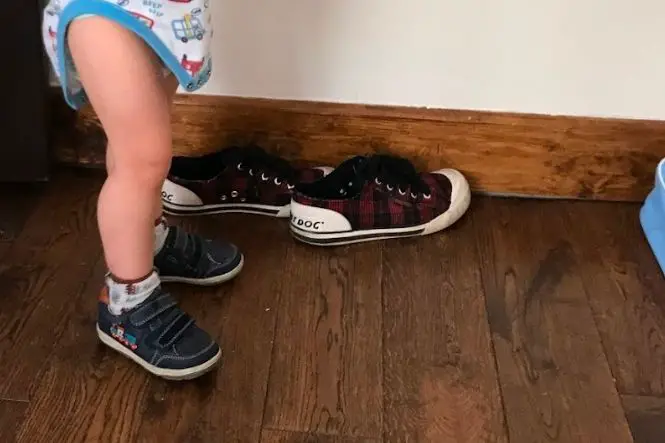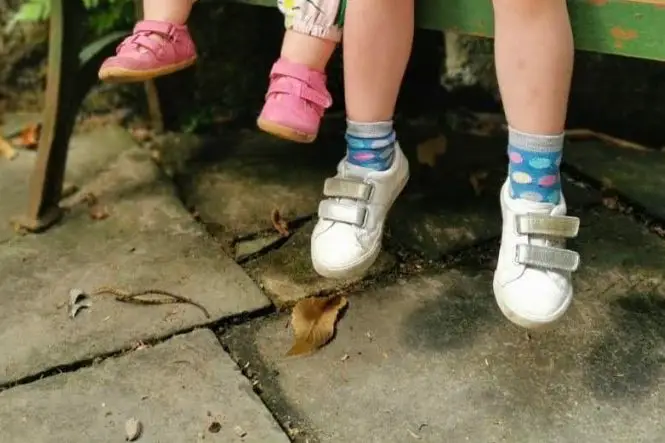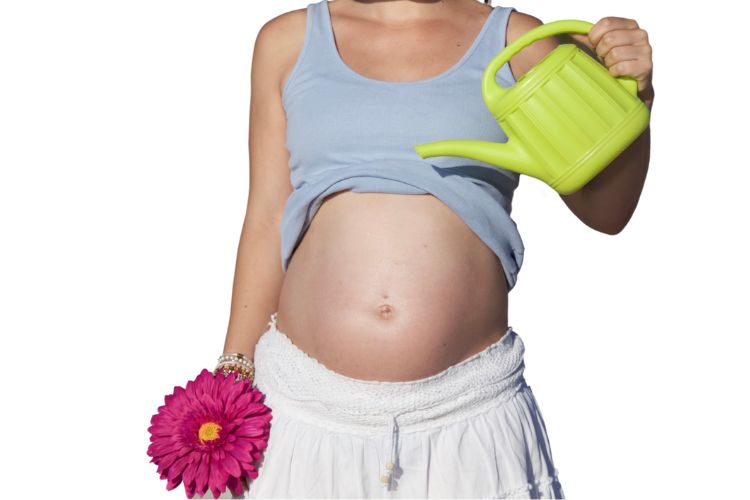Learning how to properly size your child’s shoes and boots is important so that they get the right fit. Shoes and boots that are either too small or too large for your child can cause problems with development and be uncomfortable for them to wear. Measuring your child’s feet regularly will allow you to size boots and shoes that provide appropriate structure and support for your child.
You can measure your child’s feet at home or visit a footwear store where the staff is trained in how to properly size shoes and boots. Children’s feet grow quickly so it is important to check the size of their feet on a regular basis to ensure their shoes and boots are not too small for them. Understanding the different sizes of shoes will help you choose footwear that is appropriate for your child.
Shopping in person is the best way to ensure the right size shoes or boots for your children, however, online shopping is also an option. If you have properly measured your child’s feet and understand how shoe sizing works, you can easily order footwear online. It is always advisable when ordering online to choose a store that has an easy return or exchange policy in case of an incorrect fit.

How Do I Measure My Child’s Feet?
Measuring your child’s feet is the first step in finding a pair of shoes or boots that will fit them properly. While you can visit a footwear store to have staff measure your child’s feet, you can easily do this at home. The two easiest ways to measure your child’s feet are using a foot measuring device or tracing their feet on a piece of paper.
The most common type of measuring device is called the Brannock Device–this is what you will usually see staff using in footwear stores. You can purchase these devices or similar ones to use at home. Have your child place their foot in the device and stand so that their weight is even between both feet. Then you can measure the length, arch, and width of their feet which you can then use to calculate the proper shoe size for your child.
If you do not have access to a measuring device, simply have your child stand on a piece of paper and trace their feet–if your child is too young to stand without support, this method is not recommended. Be sure to trace both feet since one foot is usually slightly larger than the other which is the measurement you should use. Using the traced image and a ruler, calculate the length of your child’s foot, then use a ribbon or soft tape measure to calculate the width.
Sizing Guide
| US Sizes | Euro Sizes | UK Sizes | Inches | CM |
| 3.5 | 35 | 2.5 | 8.625″ | 21.9 |
| 4 | 36 | 3 | 8.75″ | 22.2 |
| 4.5 | 36 | 3.5 | 9″ | 22.9 |
| 5 | 37 | 4 | 9.125″ | 23.2 |
| 5.5 | 37 | 4.5 | 9.25″ | 23.5 |
| 6 | 38 | 5 | 9.5″ | 24.1 |
| 6.5 | 38 | 5.5 | 9.625″ | 24.4 |
| 7 | 39 | 6 | 9.75″ | 24.8 |
| US Sizes | Euro Sizes | UK Sizes | Inches | CM |
| 10.5 | 27 | 9.5 | 6.625″ | 16.8 |
| 11 | 28 | 10 | 6.75″ | 17.1 |
| 11.5 | 29 | 10.5 | 7″ | 17.8 |
| 12 | 30 | 11 | 7.125″ | 18.1 |
| 12.5 | 30 | 11.5 | 7.25″ | 18.4 |
| 13 | 31 | 12 | 7.5″ | 19.1 |
| 13.5 | 31 | 12.5 | 7.625″ | 19.4 |
| 1 | 32 | 13 | 7.75″ | 19.7 |
| 1.5 | 33 | 14 | 8″ | 20.3 |
| 2 | 33 | 1 | 8.125″ | 20.6 |
| 2.5 | 34 | 1.5 | 8.25″ | 21 |
| 3 | 34 | 2 | 8.5″ | 21.6 |
| US Sizes | Euro Sizes | UK Sizes | Inches | CM |
| 3.5 | 19 | 2.5 | 4.25″ | 10.8 |
| 4 | 19 | 3 | 4.5″ | 11.4 |
| 4.5 | 20 | 3.5 | 4.625″ | 11.7 |
| 5 | 20 | 4 | 4.75″ | 12.1 |
| 5.5 | 21 | 4.5 | 5″ | 12.7 |
| 6 | 22 | 5 | 5.125″ | 13 |
| 6.5 | 22 | 5.5 | 5.25″ | 13.3 |
| 7 | 23 | 6 | 5.5″ | 14 |
| 7.5 | 23 | 6.5 | 5.625″ | 14.3 |
| 8 | 24 | 7 | 5.75″ | 14.6 |
| 8.5 | 25 | 7.5 | 6″ | 15.2 |
| 9 | 25 | 8 | 6.125″ | 15.6 |
| 9.5 | 26 | 8.5 | 6.25″ | 15.9 |
| 10 | 27 | 9 | 6.5″ | 16.5 |
| US Sizes | Euro Sizes | UK Sizes | Inches | CM |
| 0 | 15 | 0 | 3.125″ | 7.9 |
| 1 | 16 | 0.5 | 3.5″ | 8.9 |
| 1.5 | 17 | 1 | 3.625″ | 9.2 |
| 2 | 17 | 1 | 3.75″ | 9.5 |
| 2.5 | 18 | 1.5 | 4″ | 10.2 |
| 3 | 18 | 2 | 4.125″ | 10.5 |
How Often Should I Check My Child’s Shoe Size?
As adults, we have been buying ourselves the same size shoes for years, but it is important to remember that children’s feet grow incredibly fast! You will need to measure your child’s feet on a regular basis to ensure that they always have footwear that fits appropriately. Wearing shoes that are too big or too small can cause blisters and interfere with your child’s ability to walk, run, and play.
During the first two years of a child’s life, their feet are developing bone structure and time in shoes and boots should be minimized. Have your little one spend as much time as possible either barefoot or just wearing socks so that their feet are exposed to different surfaces. Check your child’s feet about every 2-3 months–while they don’t grow at a consistent rate, you will see growth spurts happen quickly at certain points.
You might think you don’t need to measure as frequently as your children get older, but a child’s feet actually grow quite rapidly during puberty. Ensure that you continue to measure at least four times a year–if you measure at the beginning of each season, this is an easy way to remember. You should also measure your child’s feet if they complain that their feet hurt as this is often an indication that their shoes are too small.
- PREMIUM MATERIAL: Made of premium ABS, durable enough for repeated use, product surface has been...
- KIDS ADDULT FOOT MEASUREMENT DEVICE: Our foot measurement device Applicable to Kids and Girls , US...
- NEVER BUY THE WRONG SIZE SHOE AGAIN: Our foot measuring device will make sure you never buy the...
What Do Shoe Sizes Mean?
Shoe sizes can vary from one country to another, which can be challenging if you are ordering online or purchasing footwear designed elsewhere. In addition to seven different sizing systems used in various countries, there are also three sets of shoe sizes for children: infant, child, and youth. Knowing how the shoe sizing system works will help you get the correct fit for your child.
Shoes and boots for infants are often measured in terms of months, most commonly, 0-3 months, 3-6 months, 6-12 months, 12-18 months, and 18-24 months. These can be converted to child sizes as well: size 1 is equivalent to 0-3 months, size 2 is equivalent to 3-6 months, and so on. Child sizes go up to 13.5 and then start over again at size 1 in youth sizes.
Conversion charts are easily available if you wish to compare US sizing with UK, European, or Japanese sizes. For example, an 8-year-old child may wear a US size 3 shoe–this would be equivalent to a UK size 2, a European size 34, or a Japanese size 22. Canadian shoe sizes are the same as US shoe sizes. Be sure to check which country’s sizing is being used before purchasing footwear.
How Do I Know If My Child’s Shoes Fit?
Properly measuring your child’s foot is just the first step when it comes to finding appropriately-sized footwear. There are additional things you can do to make sure that your child’s shoes and boots fit properly. This is especially important when your children are younger and can’t verbalize how their feet feel in their shoes the way that older children can do.
While your child is standing, push gently at the toe of the shoe–there should be a small gap between the end of their toes and the shoe. Run your finger along the inside of the shoe to check that there is a bit of space between your child’s ankle and the shoe so that it does not cause blisters when walking. Check that your child’s heel fits snugly against the back of the shoe without gaps.
When trying on shoes, have your child move around in them to check the fit and comfort. Look at their feet to see if their heel comes out of the shoe at all while they are walking–this is an indication that the shoes are too big and they need a smaller size. Your child should be able to comfortably walk, jump, or skip in their shoes without any rubbing, pinching, or discomfort.
Final Thoughts
Finding the right size shoes and boots for your child will ensure that their feet continue to develop properly, providing the foundation for bone growth that will support them through their lifetime. Correctly-fitting footwear will provide the comfort and structure your child needs to participate in physical activity such as walking, running, and playing sports. Spending a few minutes every 2-3 months to measure your child’s feet will help to make sure that you are getting the correct size shoes and boots that they need.







